Safeguarding Your Home Against Winter Thaw and Snow Melt Damage
The serene beauty of winter’s snow-covered landscapes often belies the challenges it poses to homeowners. As the cold months recede, the warming embrace of spring brings with it the thaw—a time when accumulated snow begins its transformation back to water. This transition, while a welcome sign of blossoming seasons ahead, presents a set of unique problems for homes. The melted snow, if not channeled or absorbed correctly, can lead to significant water damage, potentially weakening home structures, flooding basements, and even nurturing mold growth.
Every year, countless homeowners face the repercussions of not preparing their homes adequately for this inevitable melt. Understanding the risks associated with the winter thaw and taking proactive steps to mitigate potential damage becomes not just sensible but essential. This article aims to shed light on the perils of snow melt damage and offers actionable strategies to protect your most cherished investment—your home.
Understanding Snow Melt and Its Risks
As winter gives way to the early signs of spring, the accumulated blankets of snow begin their gradual descent into liquid form. This process, often referred to as the snow melt, occurs when rising temperatures cause the solid ice crystals in snow to revert to water. While this natural occurrence is essential for replenishing groundwaters and hydrating the soil, it poses specific risks to homes and structures.
The primary challenge lies in the sheer volume of water resulting from the melt. Think of the vast expanses of snow piled on rooftops, gardens, driveways, and around the home’s foundation. When this melts, it can generate significant amounts of water, looking for the path of least resistance. If your home isn’t prepared, this water can easily seep into cracks, crevices, and other vulnerable points.
Key risks include:
- Structural Damage: Constant water seepage can erode the foundation of a home, weakening its structural integrity over time.
- Mold Growth: Damp, dark environments created by trapped moisture are breeding grounds for mold, which can pose health risks to inhabitants.
- Basement Flooding: One of the most common issues, melted snow can rapidly flood basements, damaging belongings and the very fabric of the house.
Being cognizant of these risks is the first step in formulating a plan to safeguard your home. The subsequent sections will delve into actionable strategies homeowners can employ to counter these challenges effectively.
Gutter and Downspout Maintenance
Gutters and downspouts play an essential role in channelling and directing the flow of water away from your home, ensuring that it doesn’t wreak havoc on your structure. With snow melt in full effect, these components are more crucial than ever, acting as the primary drainage system for melted snow.
- Regular Cleaning: Over the fall and winter, gutters can become clogged with leaves, twigs, and other debris. A blocked gutter can cause melted snow to overflow, leading to potential siding damage, foundation erosion, or even basement flooding. Regularly cleaning and clearing your gutters ensures that they can handle the increased water flow during the thaw effectively.
- Check Alignment and Slope: Gutters should be slightly sloped to facilitate water flow towards the downspouts. If you notice pooling water or overflow even after cleaning, it might be due to misalignment. Adjusting the slope and ensuring that the entire system is aligned can prevent overflow and ineffective drainage.
- Redirecting Downspouts: The primary purpose of downspouts is to direct water away from your home’s foundation. Ideally, downspouts should extend at least three to five feet away from your home. Use extensions if necessary. Additionally, consider using splash blocks, which can further help in directing the water flow away, preventing foundation damage.
- Inspect for Leaks or Damage: Winter can be harsh on your gutter system. Freezing and thawing cycles can cause cracks or even detachment from the roof edge. Before the snow melt sets in, inspect the entire system for any signs of damage and repair them promptly.
Proactive maintenance and timely repairs of your gutters and downspouts can significantly reduce the risks associated with snow melt. Ensuring that these components are in optimal condition will not only protect your home but provide peace of mind during the thawing season.
Landscaping Tactics
Landscaping is more than just an exercise in beautifying our homes; it’s a strategic endeavor that, when executed correctly, offers both form and function, especially during seasons of transition like the winter thaw.
- Grading: The lay of your land is a silent guardian against water damage. Grading, or ensuring your yard slopes away from your home’s foundation, is a cornerstone of preventive landscape design. A well-graded yard acts as a natural conduit, directing the flow of melting snow away from your home. This simple, gravity-driven method minimizes the risk of water seeping into your foundation or basement. While the ideal is for the ground to decline by six inches over the first ten feet from your home, even minor adjustments can make a significant difference. Remember, water always seeks the path of least resistance, so guiding it away is paramount.
- Plants and Foliage: The natural world offers a plethora of solutions to human-made problems. In the case of snow melt, the introduction of certain plants can act as a natural sponge, soaking up excess moisture and reducing the chance of water pooling. Opt for plants with deep root systems. Grasses like fescues or ryegrass, or shrubs like willows and dogwoods, not only have the capacity to absorb substantial amounts of water but also stabilize the soil, reducing erosion. These plants, besides their functional benefits, enhance the visual appeal of your garden, making it verdant, lush, and purposeful.
Additionally, consider the installation of rain gardens or swales in parts of your yard that are naturally prone to collecting water. These are landscaped features designed to capture runoff and either hold it or direct it away. They can be both functional and beautiful, often becoming focal points of a garden while providing essential drainage solutions.
In essence, by merging intelligent design with the right choice of plants, homeowners can create landscapes that are not just pleasing to the eyes, but also champions in defending homes against the challenges posed by the winter thaw.
Basement and Foundation Protection
The foundation of your home is its bedrock, providing stability and strength. Yet, this foundational core can be jeopardized during the snow melt season, rendering basements and foundational structures vulnerable to potential water damage.
- Waterproofing: The first line of defense against potential water damage is an effective waterproofing system. As homes age, wear and tear can lead to micro-cracks or more pronounced vulnerabilities in the foundation. This makes regular inspection an indispensable step in foundation care. Upon spotting cracks or signs of wear, prompt sealing can thwart water intrusion. Modern waterproofing methods offer various solutions, from liquid rubber sealants to bentonite clay waterproofing membranes, which form a moisture barrier against external water. For homeowners, it’s not just about reacting to visible cracks but preemptively reinforcing the foundation to handle seasonal challenges like snow melt.
- Sump Pumps: A basement’s best friend during wet seasons is undeniably the sump pump. Specially designed to handle water accumulation, these pumps kick into action when water levels rise, ensuring your basement remains dry and safe. If your home is situated in a low-lying area or has a history of basement flooding, a sump pump becomes a non-negotiable addition. Beyond just having a sump pump, regular maintenance checks are crucial. This includes inspecting for clogs, ensuring the float switch moves freely, and testing the pump’s operation. Given the unpredictability of weather and potential for power outages, considering a battery backup for your sump pump can be a game-changer. This ensures uninterrupted operation, even during electrical failures, offering peace of mind during intense thaw periods.
- Drainage Systems: Beyond waterproofing and sump pumps, a well-designed drainage system can further safeguard your basement. French drains, for instance, are trenches filled with gravel containing a perforated pipe that redirects water away from the house. They can be an invaluable addition, particularly for homes susceptible to extensive groundwater.
- Insulation and Vapor Barriers: Adding insulation can help maintain a consistent temperature in your basement, reducing condensation. Vapor barriers, on the other hand, are materials used to resist the diffusion of moisture through the wall, ceiling, or floor of a structure. Implementing these can aid in maintaining a dry basement environment.
In conclusion, while nature’s thawing process is inevitable, water damage to your foundation and basement isn’t. With diligent measures, regular inspections, and the right equipment, homeowners can confidently face the snow melt season, knowing their home stands on solid, dry ground.
Roof and Attic Considerations
Melted snow can also pose threats from above, particularly when it refreezes.
- Ice Dams: These are ridges of ice that form at the edge of roofs, preventing melted snow from draining off. Water can then leak into homes, causing damage. Preventing ice dams involves improving attic insulation and ensuring proper ventilation so that the entire roof remains at a consistent temperature.
- Ventilation: Proper attic ventilation can prevent unwanted melting during the day and subsequent refreezing at night. This cycle can damage roof shingles and even lead to leaks. Ensure your attic has a balanced system of intake and exhaust vents.
Conclusion
The transition from winter’s embrace to the refreshing warmth of spring brings along challenges that homeowners must prepare for. Snow melt, while a natural and essential process, can pose significant risks to unprepared homes. By understanding these challenges and taking a proactive stance—from maintaining gutters to ensuring effective landscaping—homeowners can protect their investments and enjoy the changing seasons without worry. Embrace the thaw with readiness and confidence, knowing your home is well-shielded from potential damage.

